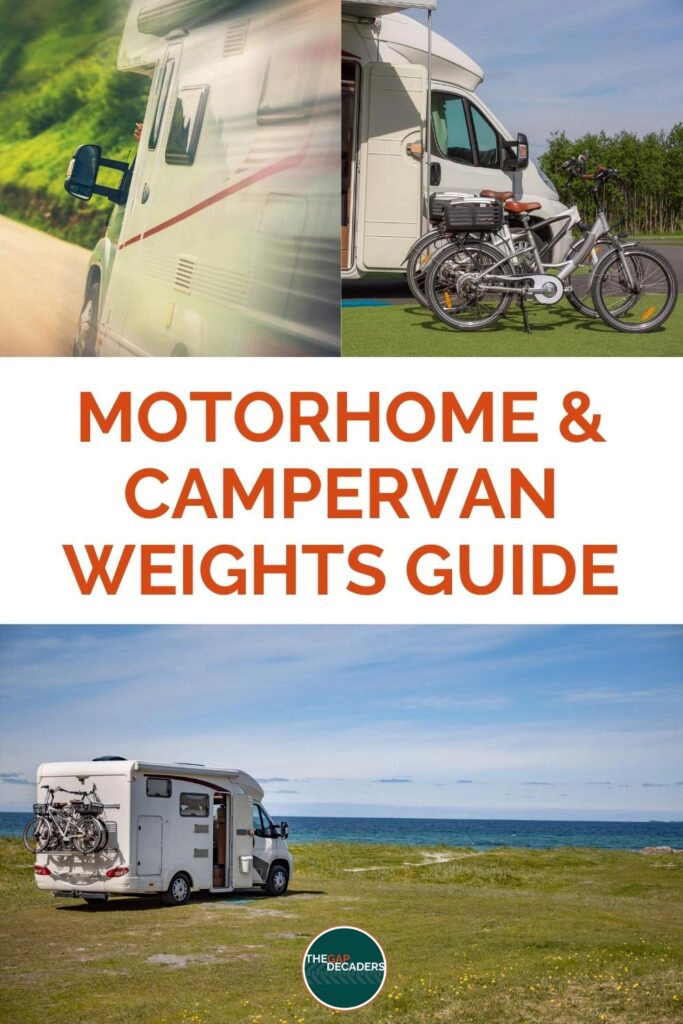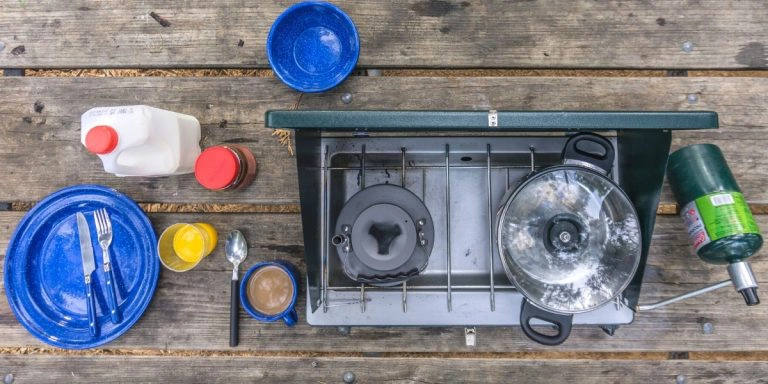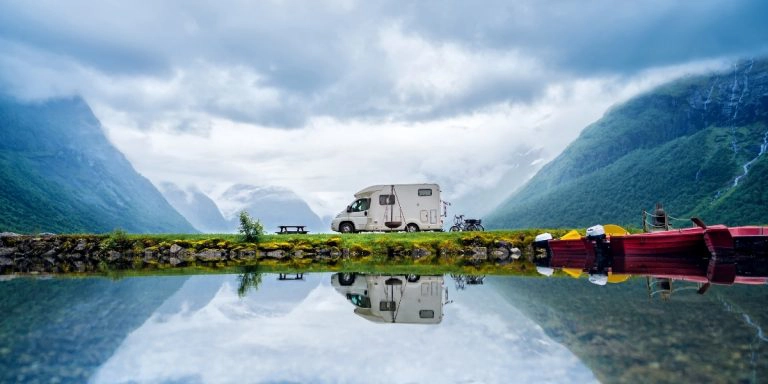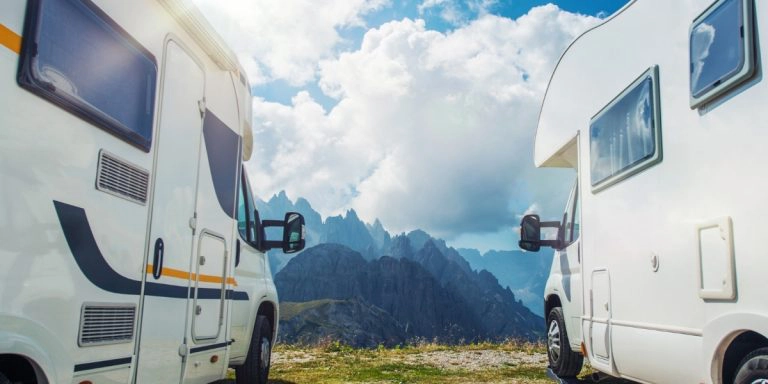This post may contain affiliate links, from which we earn an income.
Everything You Need to Know About Motorhome Weights
Do you know how much your motorhome weighs? After a recent shock at the weighbridge, we decided to do some research into motorhome weights, how they are calculated and what it all means.
The UK Police say they believe that around 75% of camper vans and motorhomes weigh in over their maximum weight limit when travelling. That’s is an astonishing figure when we should all know that being over weight causes excessive wear on your vehicle and tyres, impacts on safe driving and can invalidate your motorhome insurance.
If you get caught, or have an accident, it can lead to points on your licence, fines and potentially a conviction for unsafe driving. Why take the risk? Read our easy motorhome weight guide and hit the road safely.

Motorhome Weight Limits
How much does a motorhome weight? That’s a tough question to answer. Motorhome’s are usually banded into three categories by manufacturers and it’s mostly to do with how driving licence groups dictate what you can drive.
- under 3,500kg – anyone with a car licence can drive this category of motorhome.
- between 3,500kg up to 7,500kg – if you passed your driving test before 01/01/1997 you can drive this category of motorhome until you are 70, when you need to apply to the DVLA to retain your Cat C1 licence.
- over 7,500kg – you need a Cat C or LGV licence for a motorhome in this category.
Motorhome Weights Terminology
Before we get into the detail, it’s worth just setting out the (often confusing) terminology used when discussing motorhome weights! Just to make matters even more confusing, there is often more than one description for each weight category!
These acronyms are used to describe the weight of the vehicle in full travelling trim i.e. fully laden and ready for a trip, the absolute most your motorhome can weigh;
- GVW – gross vehicle weight
- MAM – maximum authorised mass
- MTPLM – maximum technically permissible laden mass
- PMW – permissible maximum weight
Use these acronyms to describe the weight of a new motorhome as it leaves the factory;
- MRO – mass running order
- MIRO – mass in running order
This acronym is used to describe the maximum combined weight of the motorhome and anything it is towing, including everything both are carrying;
- GTW – gross train weight
RELATED POST: Motorhome Glossary – A-Z of Terms & What They Mean
Maximum Allowed Weight
The MAM includes the weight of the motorhome, any extras you had fitted and everything you carry including people, water, fuel and supplies.
To understand your motorhome’s MAM or maximum allowed weight check the owners handbook, vin plate (in the engine compartment) and the chassis plate (usually inside the cab door). It should look something like this one below.
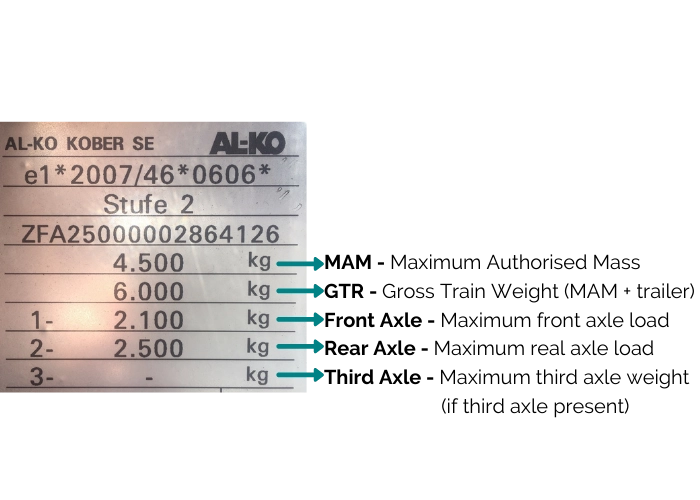
Mass in Running Order
The MRO or MIRO (mass in running order) is the weight of the new motorhome as it leaves the factory. The problem with the MRO is that there is no legislation that dictates what this should include. Some manufacturers include a portion of a tank of fuel and driver who weighs 75kg, others include a potion of a tank of fuel, and tank of fresh water.
When you buy a new motorhome, the dealer should be able to tell you the MRO of the motorhome so you can work out your payload (we’ll come on to that in a bit).
MRO & New Motorhomes
The MRO can be a contentious figure because motorhome manufacturers want to sell their vehicles with as high a payload as possible, but try and keep the vehicle below 3,500kg so that it appeals to a wider audience.
The MRO does not include any extras you order like awnings, satellite dishes, extra leisure batteries and so on, so the manufacturer is keen to make the most basic vehicle possible to give the impression of a higher payload.

The Complete Guide for Motorhome Beginners Ebook
If you want all our beginner resources (and a few extras just for you) in one place, take a look at our ebook. With over 100 pages of tips, advice and practical information, this book brings all our learning into one easy to read, downloadable volume which you can take with your wherever you go.
“The ebook all new motorhomers should read” John – Londonderry
MRO & Used Motorhomes
You may struggle to find out this baseline figure for a used motorhome or van conversion unless you have the original sales documentation. Try checking with the manufacturer if this is the case.
If you can’t find the MRO and are worried about buying a used vehicle which may have an impossibly small payload, ask the seller to take it empty to a weighbridge and get a ticket. Even though it won’t be the manufacturers MRO, you’ll still be able to work out the payload and the weight from the weighbridge will also include any fitted extras.
Motorhome Payload
This is arguably the most important number of them all, because this is the weight you can add to your motorhome when you load up with water, gas, people, food and everything else you want to carry for a trip.
You can work out your motorhome payload by deducting the MRO (or weight from a weighbridge when empty) from the MAM.
So, a motorhome with an MAM of 3500kg and an MRO of 3000kg would have a payload of 500kg.
Towing in a Motorhome
The GTW is the maximum allowable combined MAM of your motorhome, plus the mass of the trailer and cargo in the trailer. In the example above, this means your laden trailer can weigh no more than 1,500kg.
This is a complex calculation by the manufacturer of your motorhome involving, amongst other things, the capacity of the driving axles and tyres and the ability of the chassis to withstand the load.
It is impossible to say what the average weight of a camper trailer might be; people in motorhomes tow cars, motorbikes, small camper trailers and large box trailers all of which vary in weight greatly. Your trailer should also have a weight plate showing details.
The calculations regarding weight limits for touring caravans are very different, as they are essentially trailers and not vehicles in their own right.
Information on Axle Weights
Also shown on the chassis plate are the maximum individual axle weights. It is also important to understand these as many of us chuck the heaviest items in the garage and add a cycle or scooter rack.
This risks the rear axle loading being above the specific axle load weight, which can damage the chassis and cause handling and stabilisation issues. Try and pack your gear evenly across the whole footprint of your motorhome.
If you want to add a rack on the rear for bikes or a scooter, read this helpful guide to calculating axle weights.
Start your beginners journey to life on the road with exclusive checklists, free downloads, tips & more
How Much Payload Do I Need?
Let’s take the popular Swift Bessacar 524 (2019) 4 berth motorhome. The MAM is 3500kg, a pretty average motorhome weight nowadays.
The MRO is 3012kg, which includes standard equipment, the most basic engine, a standard awning as well as the driver, a gas bottle and 90% full fuel and water tanks.
If you’re interested in understanding which are the best payload motorhomes and campervans on the market (including motorhomes under 3,500kg and lightweight campers), use Facebook groups (ours is a good one!) to ask questions of owners, and research MRO and MAM using manufacturers specifications.
What does that leave us to take on our motorhome tour of Europe? 488kg of stuff to be exact, which looks like this…
The Essentials
The Essentials Weight = 295kg
The Nice to Have’s
The Nice to Have’s Weight = 147kg
Everything Else
Remember that this van only has an awning fitted as standard. Anything else such as air conditioning, satellite dish, spare wheel or microwave will add to the weight.
Everything Else Weight = 106kg
Total Weights
| The essentials | 295kg |
| The nice to have’s | 147kg |
| Everything else | 106kg |
| Total | 548kg |
| Payload | 488kg |
| Overweight | 60kg |
Overweight?
Don’t panic, here are some steps you can take to help reduce motorhome weights;
- Don’t load up with food and drink, buy it on arrival once you’re there.
- Bite the bullet and compromise; do you really need three pairs of heels and six handbags, especially if you’re motorhome wild camping?
RELATED POST – 101+ Motorhome Essentials You Need + Packing Checklist
- Travel with your water tank empty, filling on arrival.
- Travel with your fuel tank half full and stop more often for fuel. Likewise your gas bottles.
- Really think about those extras and what you need. Could you stream TV to a laptop instead of having a satellite dish fitted? How often will you use a/c if you’re touring in the UK?
RELATED POST – Motorhome Accessories, Equipment & Options
- Consider re-plating or uprating your motorhome weight. Many 3.5 ton motorhomes are built on chassis which are able to carry more weight but are plated at 3500kg so that can be driven by anyone with a licence. SV Tech provide this service and always receive great reviews.
- To re-plate to over 3.5 tonne you would need to take your Cat C Large Goods Vehicle (LGV) licence or have passed your test before 1st January 1997. This means you will have the Cat C1 entitlement on your driving licence, which allows you to drive a a vehicle between 3500kg and 7500kg.
- Use this handy motorhome weight calculator which will work out your GVW for you.
RELATED POST – 16 Tips to Help Manage Motorhome Payload
Where to weigh my motorhome?
Once you are happy that you are around the right weight, head of to your nearest public weighbridge and check (there may be a charge).
You can weigh the whole vehicle as well as just the front and rear axles if you want to be sure your gear is evenly distributed throughout and your motorhome weights are within the specified limits.
The weighbridge staff will give you a copy of the documentation and details of your motorhome weight before you leave.
RELATED POST – How to Take Your First Motorhome Trip
Are you looking for more useful motorhome resources? Check out these top posts…
101+ Motorhome Essentials You Need + Packing Checklist
Buying a Motorhome That’s Right for You – All You Need to Know
Motorhome Tips for Beginners – Essential Know How for Motorhome Life
Motorhome Accessories: What Should You Have in Your Motorhome?
The Best Motorhome Gadgets (that you will actually use!)
How to Tour Europe in a Motorhome – Your Complete Guide
Love it? Pin it!

